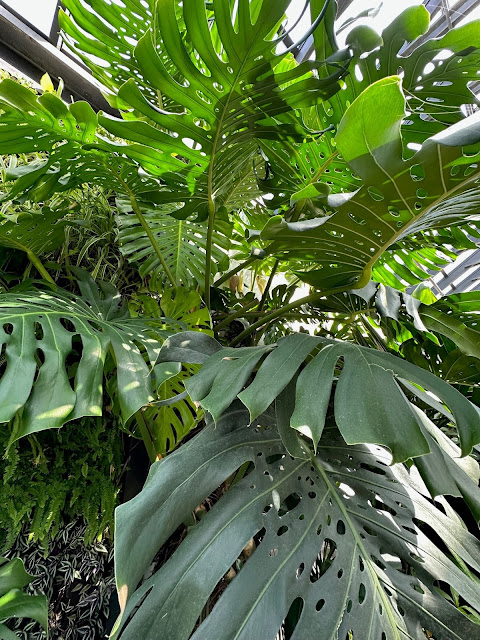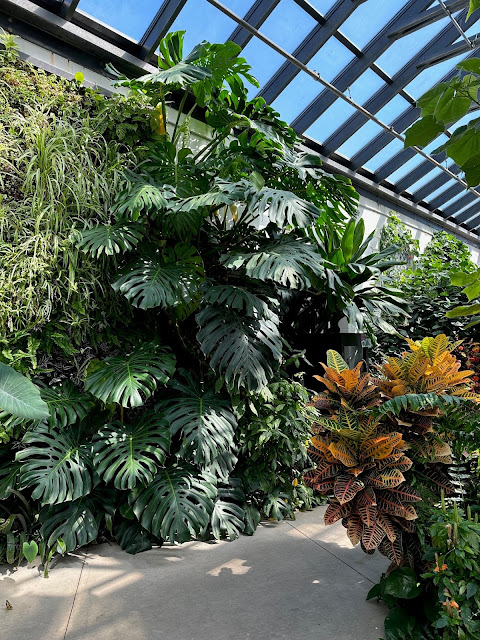What’s Blooming: The Swiss Cheese Plant
by Jack Donovan, Horticulture Intern, Gardens on Spring Creek
Our Butterfly House Monstera deliciosa, also called a Swiss cheese plant, is blooming for the first time in four years!
This perennial evergreen vine is native to Mexico and Central America, growing in Zones 10–12. Commonly grown as houseplants, these plants often fail to reach their full potential. Luckily our Butterfly House provides an ideal spot for this specimen.
Monsteras rarely bloom in homes, because they require conditions and space that approximate their native, rain-forest habitat. Thus, our Monstera is a must see! With a white spadix (a spike that has tiny flowers on it) growing to approximately 10 inches, the bloom will eventually produce an edible fruit that tastes like pineapple and banana. The plant’s perforated “Swiss cheese” leaves, called fenestrations, are believed to be an attempt by the plant to capture more sunlight or, possibly, to see their large leaves through high winds undamaged.
Here are three photos of the bloom, starting with a close-up and zooming out to show the enormous size of the plant. Can you still see the blooms in the two larger photos? They are there!


